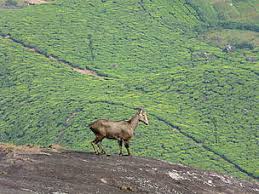BIODIVERSITY HOTSPOTS IN INDIA
INTRODUCTION
Biodiversity hotspots are regions with high species richness and a high degree of endemism (Endemic species).
Norman Myers, the British biologist coined the term “biodiversity hotspot” in 1988 as a biogeographic region characterized both by exceptional levels of plant endemism and by serious levels of habitat loss.
It designates an area which faces serious threat from human activities and supports a unique biodiversity with representative of evolutionary process of speciation and extinction.
According to Conservation International (CI), to declare as a hotspot a region must have two firm criteria-
- It must contain at least 1500 species of vascular plants as endemics- it means it must contain high percentage of plants life than other else. So it is irreplaceable.
- It must be threatened i.e. it must have 30% or less of its original natural vegetation and has to have lost at least 70% of its original habitat.
The number of hotspots now is 35 as CI identified. It covers about 2.3% of the world’s land surface; yet more than 50% of the world’s plant species and 42% of all terrestrial vertebrate species are endemic to these areas.
BIODIVERSITY HOTSPOTS IN INDIA
Based on the criteria proposed by CI, India has four hotspots.
- Himalaya- this region includes entire Indian Himalayan region (North east India) along with some part falls in Pakistan, Tibet, Nepal, Bhutan, China & Myanmar.
This hotspot is home to important populations of numerous large birds and mammals, including vultures, tigers, elephants, rhinos and wild water buffalo. There are almost 163 endangered species (facing a very high risk of extinction in the near future) in this region including one-horned rhinoceros, wild Asian water buffalo and as many as 45 mammals, 50 birds, 12 amphibians, 17 reptiles, 3 invertebrate and 36 plant species. - Indo-Burma- Includes entire North-eastern India, except Assam and Andaman group of Islands (and Myanmar, Thailand, Vietnam, Laos, Cambodia and southern China).
This hotspot holds remarkable endemic turtle species, most of which are threatened with extinction, due to over-harvesting and extensive habitat loss. Though six species of mammals have been discovered in this region recently including large-antlered muntjac, Annamite Muntjac, gray-shanked douc, leaf deer, saola and Annamite striped rabbit. Almost 13,500 plant species can be spotted in the region, half of which are endemic and cannot be spotted anywhere else. - The Western Ghats- Includes entire Western Ghats (and also Sri Lanka). These hills are present along the western edge of peninsular India and most of the deciduous as well as rainforests are present in this region. Around 77% of the amphibians and 62% of the reptiles found here cannot be spotted elsewhere in the world. Due to tremendous population pressure, the forests of the Western Ghats and Sri Lanka too have been badly impacted by the demands for timber and agricultural land.

4. Sundalands (Andaman & Nicobar Islands) – other parts of this hotspot are in Indonesia, Malaysia, Singapore, Brunei, Philippines.
The amazing flora and fauna such as mangroves, seagrass beds, and coral reefs, of this Hotspot are bringing down to the explosive growth of industrial forestry in these islands and to the international animal trade that claims tigers, monkeys, etc. Species such as dolphins, whales, turtles, crocodiles, fishes, prawns, lobsters and seashells comprise the marine biodiversity.
REASONS FOR LOSS OF BIODIVERSITY IN HOTSPOTS
- Destruction of habitat is major reason of loss
- Illegal procurement of wildlife flora and fauna
- Change in climate has destroy many wildlife
- Pollution and
- Environmental degradation
Read more..
WHAT BIODIVERSITY IS-MEANING,TYPES&THREATS
IMPORTANCE OF BIODIVERSITY
WHAT IS PROCESS OF COMMUNICATION
WHAT IS WEEDS-CHARACTERISTIC, CLASSIFICATION & CONTROL
WATER HARVESTING-DEFINITION,TYPES & ADVANTAGES
SUSTAINABLE AGRICULTURE-DEFINITION & IMPORTANCE